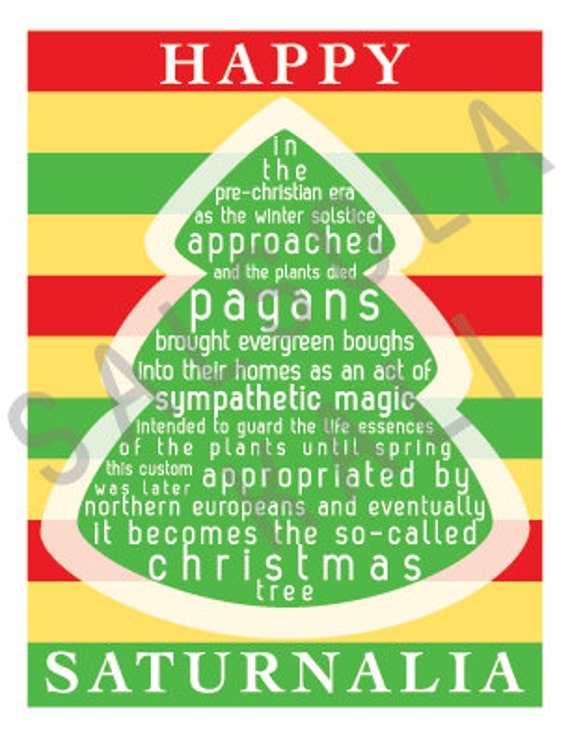

Romans would spend the week of Saturnalia much like how we spend Christmas holidays today – feasting, drinking, giving gifts, and being joyful. This was a pagan holiday in honour of the agricultural god, Saturn. Not only is December a time to celebrate winter solstice, but between the 17th and 24th of the month, the Romans also celebrated Saturnalia. So, now that you have an idea of the background, let’s look at some pagan traditions that have become associated with Christmas. As winter in the northern hemisphere tends to be a dark, cold, and hungry period of time, the winter solstice was celebrated to help keep people entertained and enjoy themselves until the sun rolled around again.

Pagans could stop farming through the winter, and instead devoted themselves to worshipping their various gods and celebrating with those around them. As they were primarily agricultural people, winter marked the end of the year’s harvest and the chance to enjoy the company of loved ones and rest from toiling the fields. The winter solstice was a huge part of pagan life. People living in the northern hemisphere celebrate winter solstice (or the shortest day of the year) smack bang in the middle of December, and this is why Christmas just so happened to fall around the same time as many existing pagan holidays. At the time, all of these different groups shared one big celebration that just hapened to fall around Christmas time – the winter solstice. Keep reading and you’ll find that Christmas is inspired by traditions from the Romans, Celtics, Norse, Druids, and more (all pagan). Clearly they were fascinated enough to pick up a few of those beliefs and traditions and adapt them as part of Christian celebrations! The winter solstice celebration All of these people and religions were lumped into the catch-all term of ‘pagan’.Īlthough Christians had the goal of spreading their religion across Europe, they were still quite fascinated by many of the customs and ways of the pagans. As Christianity spread through Europe in the early ADs, missionaries got to know a lot of different groups of people with varying religious systems and beliefs. Some pagan traditions that have become associated with Christmas:įirst thing’s first, what do we mean when we say pagan? This is a sweeping term that encompasses anyone from the Romans to the Norse in Scandinavia. In fact, most of the cultural aspects we associate with Christmas are steeped in pagan roots. If you thought those cosy traditions you knew and loved were just about celebrating Christmas, think again! Things like kissing under a mistletoe, carolling, wreaths, and even gift-giving were all aspects of pagan holidays that were adapted into Christmas celebrations in the early years.ĭecorating trees, feasting with loved ones, hanging up socks by the fireplace, and drinking yourself silly are no different – they’re all a part of pagan history and sacred holidays. Humans as a species love to take inspiration from different cultures, customs, and traditions, and believe it or not, Christmas is no different.


 0 kommentar(er)
0 kommentar(er)
